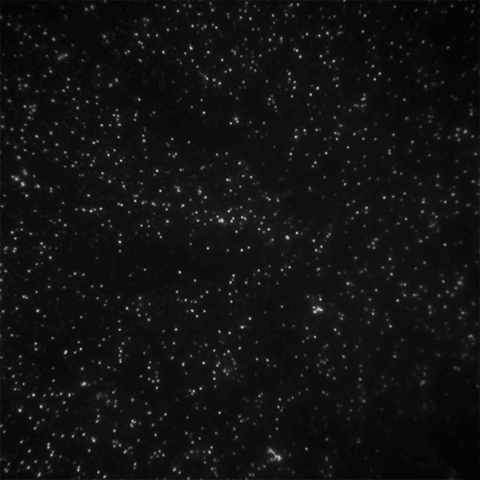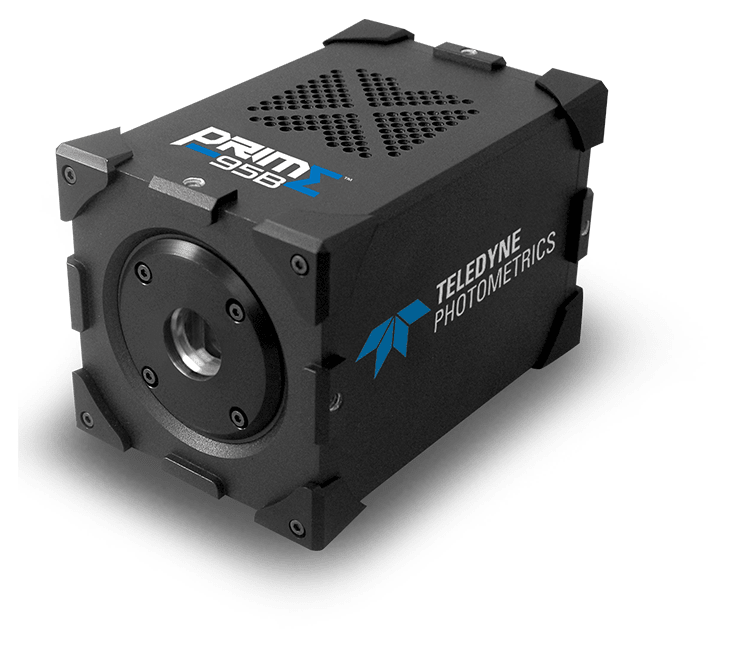Single Molecule Imaging at University of Lund
Dr. Anders Kyrsting
The Linke Group, University of Lund, Sweden
Background
The Linke Group at the University of Lund, Sweden, creates artificial molecular motors and nanowires to better understand the role of biological motors in cellular processes such as cargo transportation, muscle contraction and cell division. The group tags the motors with quantum dots and images them using single molecule TIRF. They have further plans to expand their investigation with optical trapping and STORM super-resolution microscopy.

Alumina (Al2O3) coated gallium phosphide (GaP) nanowires functionalized with biotinylated BSA (bovine serum
albumin). Streptavidin labelled with three fluorescent dyes (FITC, TRITC and Cy5), imaged under 100x magnification.
Challenge
Anders Kyrsting, post-doc with the Linke Group, explained, "Molecular motors move very fast so to track them, we need a camera with a very high frame rate." The group was previously using an EMCCD camera but the slower frame rate of its architecture meant that they had very limited temporal resolution.
Kyrsting continued, "Investigating single molecules means working with very low fluorescence signal. So, a camera with high sensitivity is equally as important as our need for a fast camera." For this reason, the group couldn't afford to sacrifice sensitivity for speed.
I don’t think I’d use an EMCCD again, I don’t know why I’d use it with the performance we get out of the Prime 95B [Scientific CMOS camera].
Dr. Anders Kyrsting
Solution
The near-perfect 95% quantum efficiency and high speed of the Prime 95B Scientific CMOS camera made it a clear fit for their work and the group was excited to implement the camera into their system.
Kyrsting told Photometrics, "The Prime 95B enabled us to reach the 200 fps speed that we needed with a far larger field of view than would be possible on any EMCCD camera."
Additionally, with the large 11 µm pixel of the Prime 95B, the group could achieve perfect diffraction limited resolution with a 100x objective, without using any additional optics.
Kyrsting continued, "The speed and sensitivity were exactly what we were looking for and the bonus of having such a large field of view has really helped our data throughput." In conclusion, Kyrsting added, "I don't think I'd use an EMCCD again, I don't know why I'd use it with the performance we get out of the Prime 95B."
 Learn More About The Prime 95B Download This Customer Story
Learn More About The Prime 95B Download This Customer Story